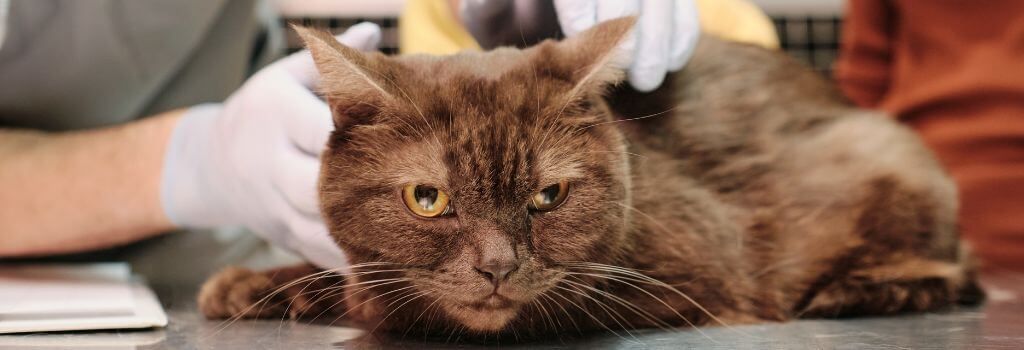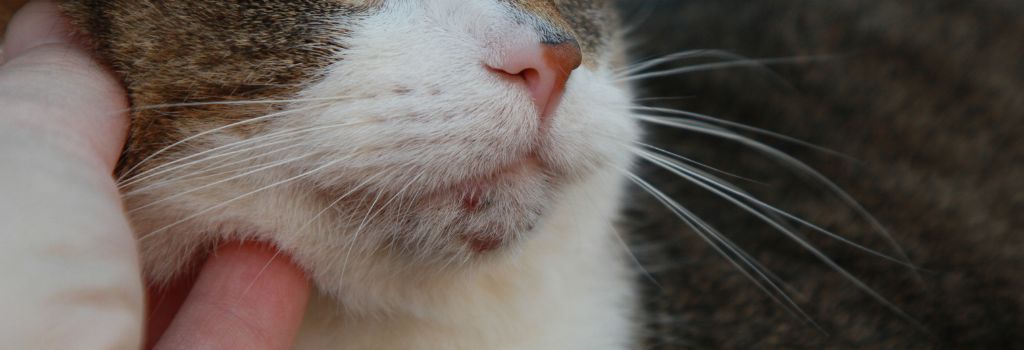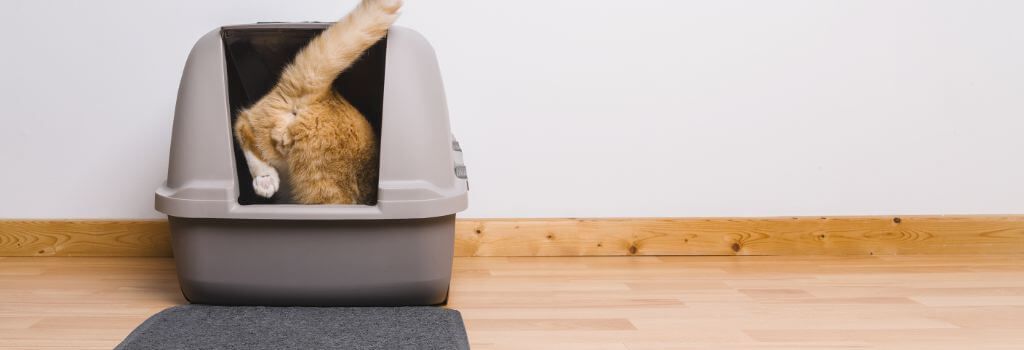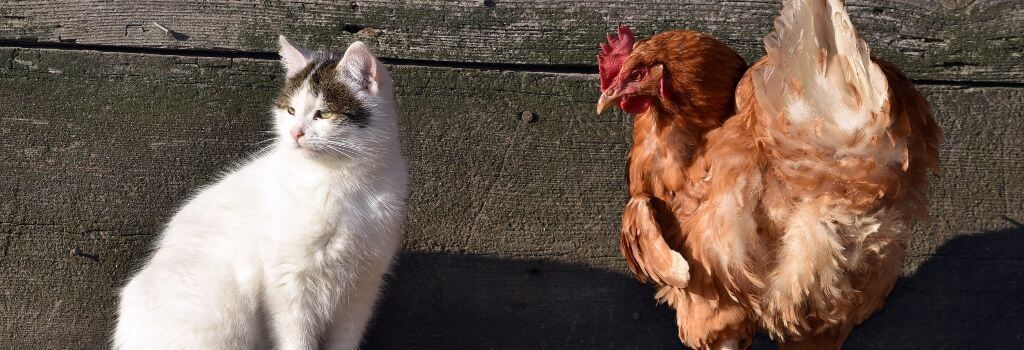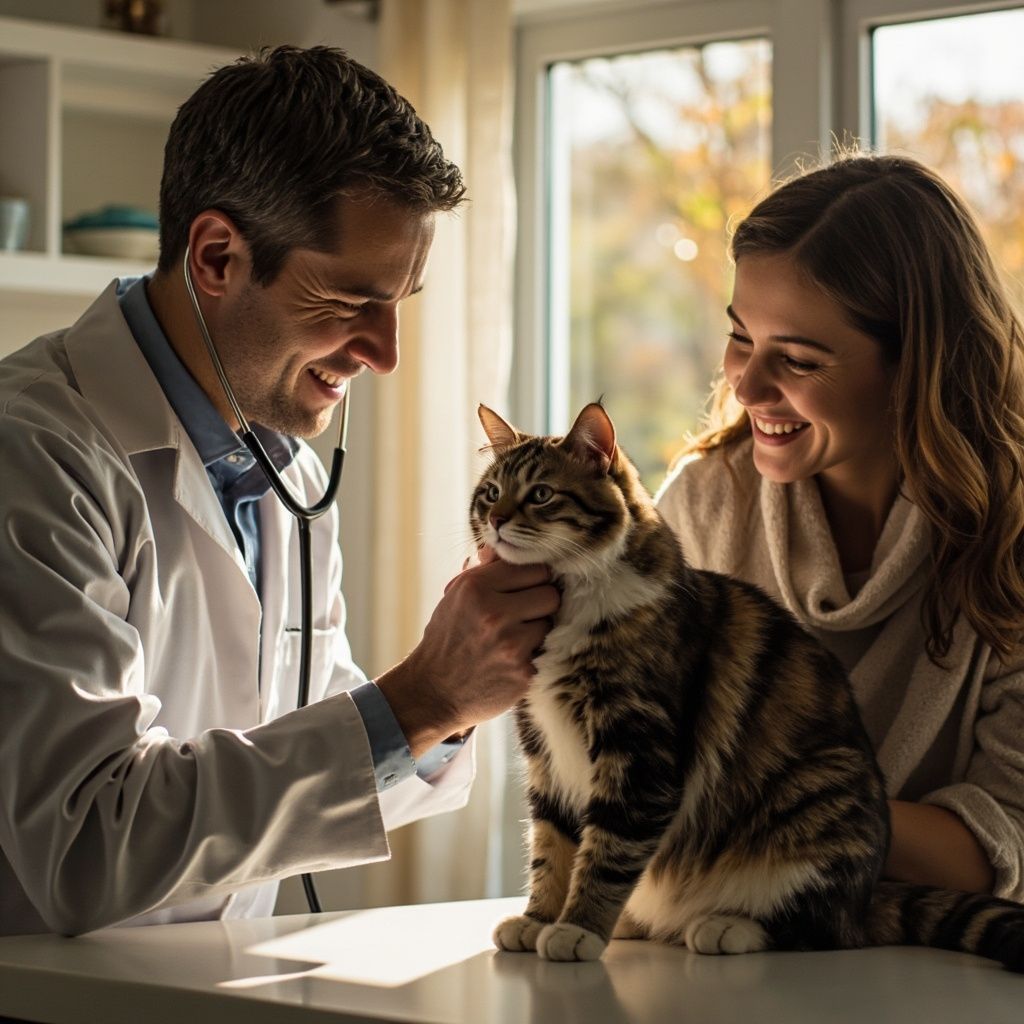How to Enrich the Life of Your Indoor Cat
As a cat lover, you might choose to keep your feline friend indoors for many reasons. In most households, though, the primary reason is safety. Indoor cats typically live 10 to 15 years while their outdoor counterparts live about 2-5 years —a significant difference, and it's because they are less likely to contract potentially deadly diseases and face other dangers. Keeping your cat indoors protects them from other animals, being hit by a car, or being abused by an unkind human. The downside, however, is that many indoor cats experience boredom and are more prone to obesity due to decreased activity. As veterinarians, we understand that cats are natural predators and that keeping them happy indoors can present some challenges. That is why we have put together this post with some suggestions on how to enrich the life of your indoor cat.
Help Them Stay Physically Active
Keeping an indoor cat active is important but often challenging. Fortunately, there are several things you can do to keep your cat from becoming a couch potato.
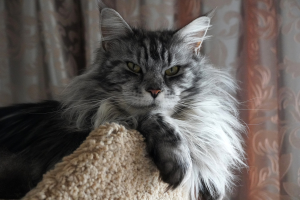
Give Them Places to Climb and Perch
Cats love climbing and perching in high spots where they can survey their surroundings. Satisfy your indoor cat’s desire to climb by getting them a cat tree – the taller, the better! If you don’t have space in your home for a traditional cat tree that sits on the floor, consider hanging sturdy shelves on the wall for your cat to perch on, climb, and explore. Providing an elevated cat bed in a sunny spot by a window is very appealing to cats. Cats enjoy looking out windows to observe wildlife and human activity. Make sure you offer your cat appropriate places to climb on to curb problematic scratching behaviors , like jumping up on counters and ruining curtains.
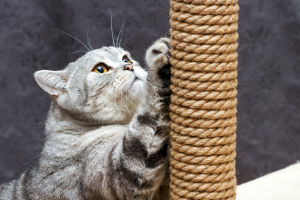
Provide Scratching Posts
Scratching is a natural feline behavior that tends to get a bad rap. After all, no one wants their pets to destroy their furniture or tear up their carpet. Scratching is a necessity for cats, though, and it is essential for their health and happiness. Providing items that allow your cat to scratch in an appropriate fashion enables them to sharpen their claws without damaging your home or belongings. Doing so also helps them stay active. Cats also leave behind their scent, essentially marking their territory when they scratch on surfaces. Since a cat’s claws grow continuously, scratching is a normal way to keep the claws in good health and not need trimming regularly. Some older cats will stop using a scratching post and will need routine nail trims to prevent claw overgrowth.
When shopping for scratching posts, do not make the mistake of getting one that is too short. Cats love stretching while they scratch, so an ideal post is tall enough for them to use even when stretched out, standing on the tips of their back toes. Experiment with different textures, too, to find one your cat loves. Some cats enjoy scratching sisal rope, carpet, or corrugated cardboard. Others prefer the natural feel of tree bark. Figure out what your cat likes best, and make sure they have a few scratchers to choose from. Some cats prefer vertical posts, while others prefer horizontal varieties. You can even add catnip to entice your cat to use the post.
If your cat will not use a scratching post or you are having a problem with them using your furniture instead, talk to your veterinarian about these concerns. This product called Feliscratch by Feliway is a favorite of many veterinarians.
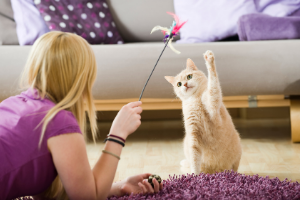
Make Playtime a Priority
Playing with your cat is the best way to keep them active. It is also an excellent bonding opportunity. Toys that crinkle, fly, or are filled with catnip are not only easy on your wallet, but they also provide hours of entertainment. To keep your cat engaged, buy several toys and rotate them out. Store toys that are not in use in a container filled with catnip before reintroducing them to your feline friend.
Most cats love kitty fishing poles and wand toys with feathery flyers. They mimic birds and kick cats’ predator drive into high gear, so they are a great way to get even the laziest cats up and moving. Take the time to experiment with different types of toys to discover which ones your pet enjoys most. Every cat has their own unique playstyle!
Be sure to regularly inspect cat toys for wear and tear and dispose of them if they are falling apart. Long strings and ribbons should not be left out with unsupervised cats as some cats will try to ingest them, and they can be an obstruction hazard.
Provide Mental Stimulation
Physical activity is important, but it is not the only type of stimulation needed to keep indoor cats healthy and happy. Mental stimulation is crucial, too, and it is a powerful defense against boredom. Not sure how to engage your cat’s brain? Here are some suggestions.

Let Them See Outside
Even if your cat is not allowed to go outside, they will love viewing the outside world through a window. There are a few ways to offer your cat the means to ogle the outdoors, and they are as follows:
- Cats who have perches that allow them to look outside benefit greatly. Keeping an eye on birds, squirrels, and even passersby on the street keeps cats entertained and engaged.
- Installing a window bed is a great way to let cats connect with the outside world without the danger of actually going outside.
- If space allows, building a “catio” is a great option. A catio is a screened-in or otherwise enclosed outdoor space that your pet can access via a window or a cat door installed in a wall or door. These enclosures can be purchased or built in any size, and they allow cats to experience the sights, sounds and smells of the outside world without the risks associated with letting them roam.
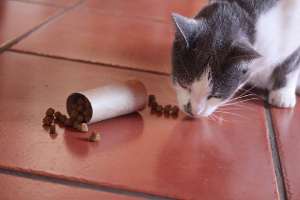
Make Mealtime a Challenge
In nature, cats hunt for their meals. They carefully stalk their prey before pouncing and – hopefully – enjoying a tasty morsel. Compared to this, a large bowl of food on the kitchen floor is pretty boring! Make mealtime more interesting and challenging for your indoor cat by hiding treats or small amounts of food in various areas throughout the house instead of placing it in a bowl.
Puzzle feeders are a great alternative to bowls, too. They contain food, but cats need to use their brains to figure out how to access the food. This extends mealtime while providing a fun mental challenge. Using puzzle feeders can reduce stress, aid in weight loss, and even eliminate inappropriate bathroom behaviors.
Many indoor cats live to eat! They will overeat readily if given the opportunity making feline obesity a real concern. Making mealtime more of a game will help prevent overeating and encourage cats to exercise for their food. If your overweight indoor cat does not participate, consider an automatic feeder that will only dispense a measured amount of food at a time. This can help prevent overfeeding due to begging by dissociating you and the food bowl.

Get Them a Companion
Many cats enjoy the company of other felines. Introducing a new cat to your home takes time and patience, but once both cats have gotten used to each other, they will run and play together. They will also give each other some much-needed mental stimulation, especially when you are away from home. Just remember to have cats of opposite sexes spayed and neutered to prevent unwanted pregnancy!
With the right physical and mental stimulation, indoor cats can live long, healthy lives without ever venturing outside. By keeping your cat strictly indoors, you are safeguarding them against devastating diseases, parasites, other animals, and even unkind humans. While your cat may try to convince you that they would be happier outside, there are plenty of things you can do to meet their needs indoors. Another great resource is this Indoor Pet Initiative put out by Ohio State University.
If you have any further questions or concerns about enriching your indoor cat’s life, please give us a call.
Recent Posts

